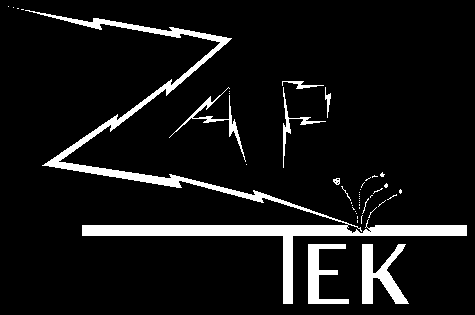
High Voltage Computing Gone Berserk
Ya' I know, it aint much of a site yet, but it loads quick. and it always will.
001 Test your browser sound configuration
I also give instructions for settings on Netscape under Linux
002 How best to use this course
I make available a downloadable version
003 Symbol Conventions Discussion
I discuss symbol conventions, and assumptions
004 Symbol assumptions Discussion
I discuss electronics as a discipline of combining
many small building blocks to form a large system
005 Symbol for wire discussion
I discuss the true symbolic meaning of a wire, and by inference
the implied meaning of ground, and labeled power sources
006 Measurement in a simple circuit
I discuss the complete circuit, consisting of a battery,
and a resistor
007 Series Parallel
I discuss Series, and Parallel, and "Parallel Equivelent" circuits
and how to calculate voltage drops in these circuits
008 Thevenin's Theorem
I discuss Series, Thevenins Equivalent curcuits, a technique for
calculating voltage drop across resistors that are in circuits that
defy simple ohms law calculation
009 Confusion solution
I discuss Norton's Theorem, Units of electrical measure, the twelve equation
pie chart, how to read color coded resistors, and resistor wattage ratings
010 Sine Waves
I discuss how sine waves are formed in an electric gererator, the
significance of pi, the notion of time domain versus radian domain,
Peak, and Peak-to-Peak versus RMS, and DC equivelents, the Diode Bridge
is also introduced as a tool for conceptualization.
011 RC, and LC time constants
I discuss how to make capacitors, and inductors, their charging/discharging
charateristics, the LC resonant circuit is given an introduction, and I include
a practical Lab that demonstrates inductive back EMF, as you build a very
simple "flyback" circuit.
012 Coupling, De-coupling, and Isolation
I discuss how to get desired signals, and power, from one circuit to
another, while preventing undesired paths of electrical current from joining
the two circuits electrically, or in other applications, permitting a
different DC offset of two circuits, that share a common ground.
013 Phasor arithmetic
Note: You'll need a Scientific Calculator, capable of
"Polar <--to--> Rectangular"
conversion, and you need to have studied your owners
manual, to gain familiarity with these kind of operations.
I discuss how to use simple vector algebra to handle all of your Phasor
Diagram arithmetic, if you already have a solid background in Phasors, or
know how to apply imaginary numbers, I don't intend to cover imaginarys here,
you may skip this lesson, as this only covers the math, impedances will be
covered next.
014 Impedance Experiments
I discuss how to safely carry out experiments using line voltage, several
construction techniques are covered, as are projects to build rudimentary
test equipment. An experiment that demonstrates in a very convincing way
the difference between resistance, and reactance. Techniques for determining
the voltages, and currents of the windings of unknown transformers are given.
An introduction to the Oscilloscope, is used to measure core saturation
of a transformer. Assigning the phase of a multiwinding transformer, is
explained, followed by many different configurations of half, and full wave
rectified, simple, single stage filtered DC powersupplies, and some esoteric
diode circuits that may prove useful someday.
016 Semiconductor Physics
I discuss how diodes work
017 Diode Approximations
I show the details of how diodes, and transistors work, and how to
approximate their behavior. You design and build a practical lab
powersupply as an exercise to apply what you've learned thus far.
A two stage preamplifier with a voltage gain of fifty is used as
an example, to illustrate various facets of transistor gain.
The Diode Clamp, and a Diode Wave Shaper illustrate
various facets of diode behavior.
018 Transistor Amplifiers
I discuss the more interesting amplifier configurations.
Some places you can get parts
Here I provide a list of places you can acquire catalogs, to buy electronic
parts, some are industrial/consumer surplus, some are Military surplus, and
others are new, send off for the free catalogs, most of these have toll free
telephone numbers, do this right away, so you can look, and drool over the
neat stuff they carry.
Go Back home
The large print Giveth, and the small print Taketh away
CopyLeft License
Copyright © 2000 Jim Phillips
Know then: You have certain rights to the source data,
and distribution there of, under a CopyLeft License

